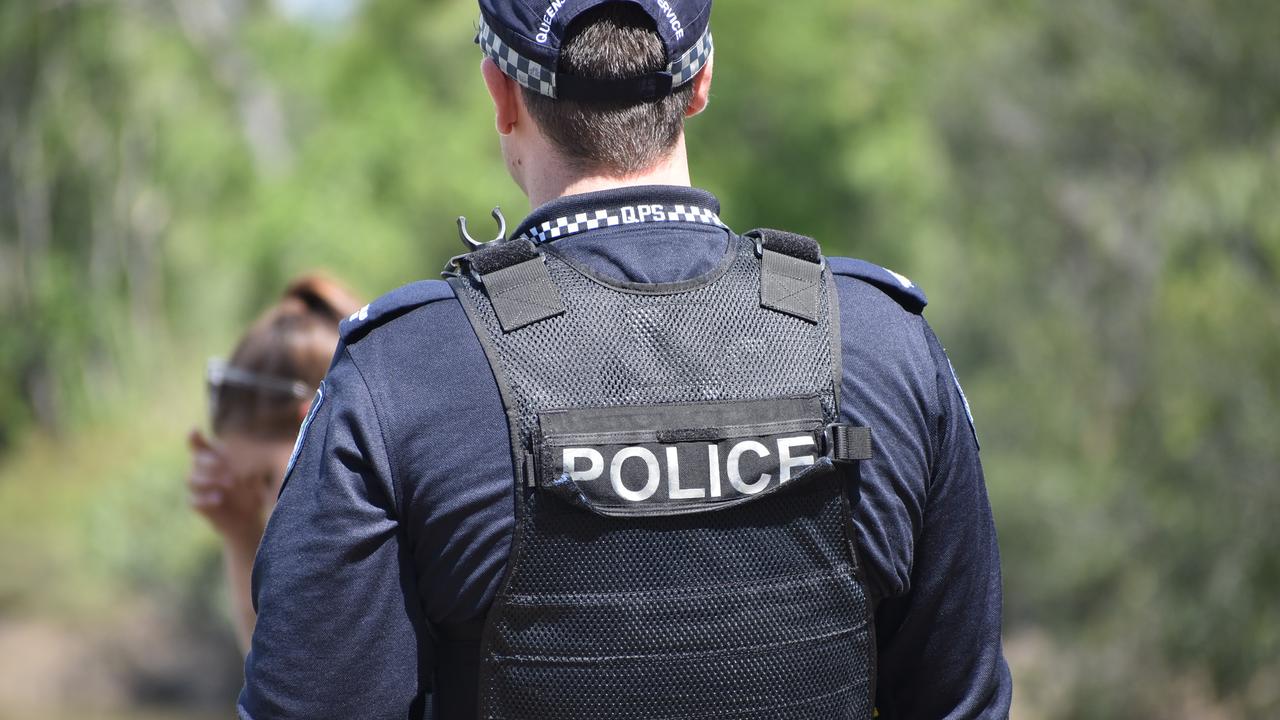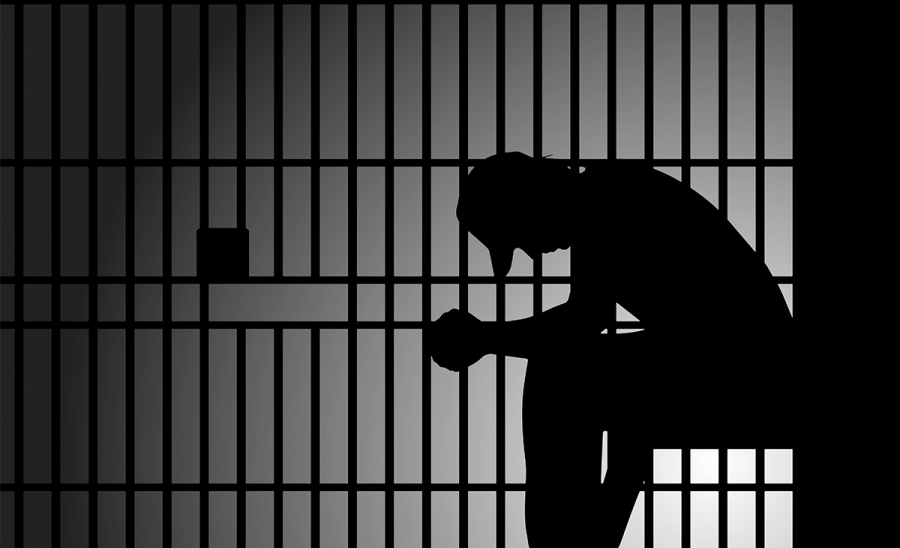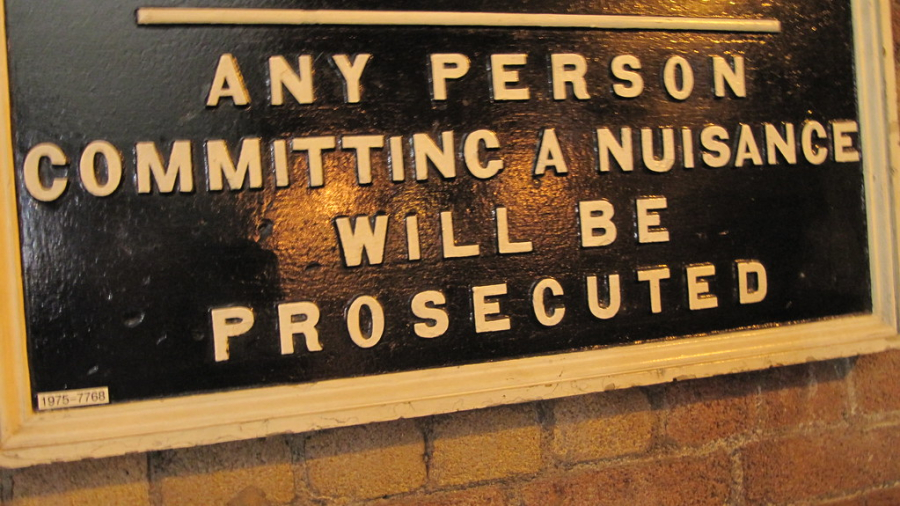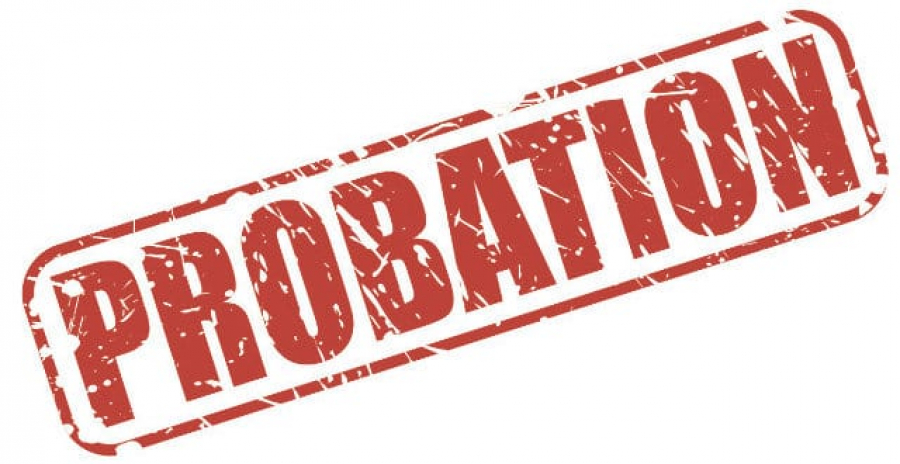Clarity Law
Imprisonment is the harshest sentence available to Queensland courts to punish offenders and to deter others from committing similar offences. Some crimes are so serious that the court will impose imprisonment even for a first offence and regardless of the offender’s otherwise good character. In other cases, the court will only use imprisonment as a last resort, and usually because other types of punishment have not been sufficient to deter the offender from re-offending. Somewhere in the middle are cases that would otherwise require the offender to be imprisoned but, because of the overall circumstances in which the offence was committed, the court thinks that it would be unjust to send them into custody.
Because of this wide variety of cases, the courts have some latitude in deciding how sentences of imprisonment may be structured. In short, the courts have 3 main ways to impose imprisonment: (1) wholly suspended sentences; (2) immediate release onto parole; and (3) actual imprisonment with a requirement to serve time.
The purpose of this article is to explain briefly each of these 3 types of sentences to help you understand the options the court has should you find yourself facing a potential term of imprisonment.
Wholly Suspended Sentences
Sentences that are wholly suspended could be described as nominal sentences of imprisonment, owing to the fact that they do not require you to spend any actual time in custody. Instead, the force of the punishment consists of a threat of being imprisoned at a future time should you commit any further offences.
The court determines how long you are subject to this threat of future imprisonment. It may be for as long as the suspended sentence itself, or for a longer period (up to a maximum of 5 years). Because of this feature, suspended sentences have 2 timeframes: the period of the nominal imprisonment (the “sentence” itself) and the “operational period” of the sentence (how long the sentence hangs over you as a threat of future punishment). Usually, the operational period is proportionate to the length of the sentence.
It is best to understand suspended sentences by way of an example. Suppose you are convicted of a serious offence. The court decides that the appropriate punishment is to imprison you for 12 months. However, the court also decides that it should wholly suspend the imprisonment. It then decides that the operational period of the suspension is 2 years. What does this mean?
In short, it means that you do not serve any actual time in custody. It also means that you are subject to the threat of 12 months’ imprisonment for 2 years, starting from the date of sentence. It also means that, if (during those 2 years) you are convicted of any offence that attracts imprisonment as a possible punishment, the court ought to make you serve the 12 months’ imprisonment in addition to any other punishments you may face for the new offending.
The court acts on the presumption that it should activate the suspended sentence unless it is unjust to do so. In other words, should you commit another offence during the operational period of a suspended sentence, you face an uphill battle convincing the court not to send you to prison.
Imprisonment with Immediate Release onto Parole
Like wholly suspended sentences, imprisonment with immediate release onto parole does not require you to spend any actual time in custody. Similarly, immediate release onto parole comes with the threat of future imprisonment should you be convicted of any further offence while subject to parole.
However, unlike wholly suspended sentences, you spend the period of imprisonment under a form of supervision in the community. This supervision comes in the form of reporting to your nearest Probation and Parole office at a frequency decided by your parole officer. Your parole officer also has the authority to make you undergo regular alcohol and / or drug testing (if appropriate), alcohol and drug intervention courses, counselling, or other meetings. The purpose of these conditions to help you address any underlying issues which may have caused you to offend in the first place. There is a risk that you may continue to commit offences if these issues are not resolved.
Other, standard conditions of parole include:
- Not committing any other offence during the period that you are on parole;
- Updating Probation and Parole of any change of address, or change of employment within 48 hours of the change;
- Receiving home visits from Probation and Parole, as directed;
- Not leaving the State of Queensland without the prior permission of Probation and Parole; and
- Complying with any other lawful direction given to you by Probation and Parole.
Should you breach any of these conditions, Probation and Parole may take action to prevent you from committing any further breaches. Such actions may include adding further conditions to your parole, or issuing a verbal or written warning. However, if the breach is serious enough, Probation and Parole may suspend your parole and issue a warrant for your arrest. In this case, you will be put in custody for up to 28 days. In an extreme case, Probation and Parole may refer you to the Parole Board, who has the power to cancel your parole completely.
Should you be convicted of any further offences, and sentenced to another period of imprisonment (however served), your existing parole is automatically cancelled.
Serving Actual Time
A sentence of imprisonment requiring you to serve a period of time in actual custody is the most serious form of imprisonment in Queensland. The very day that you are sentenced to imprisonment involving actual time, you are taken immediately from the courtroom and into the custody of Correctional Services. You remain in custody until the end of the period of imprisonment set by the court.
You generally do not serve the entire period of imprisonment. Similar to suspended sentences, there are 2 timeframes involved in sentences of imprisonment: the total period for which imprisonment is ordered (often referred to as the “head” sentence) and the amount of time you are required to serve in actual custody.
As a general rule, you only serve approximately one-third of the entire sentence if you plead guilty. If you are found guilty at the end of a trial, you can expect to serve up to one-half of the head sentence. While these are general rules, it is ultimately up to the court to decide how much of the head sentence you must serve in actual custody. Any exceptional features of your case may convince the court to order that you serve less time in actual custody if those features are in your favour. Of course, you may be required to serve more time in custody if those exceptional features are not in your favour.
However, there are some legislated exceptions. For example, if you are convicted of a “serious violent offence”, you must remain in prison for either 80% of the head sentence or 15 years, whichever is the lesser period of time. There are similar rules for those sentenced to “life” imprisonment, those convicted of drug trafficking and who are members of criminal organisations, etc.
Once you have served the required amount of time in prison, the remainder of the sentence may be suspended. If this occurs, the remaining time under the head sentence hangs over you in precisely the same way as a wholly suspended sentence. It is more likely, however, that you will be released onto parole.
How you are released onto parole depends on the length of the head sentence. If you are sentenced to imprisonment for 3 years or less, the court determines the date you will be released onto parole. This means that, when that date arrives, you are automatically released from prison. However, if you receive a sentence of more than 3 years, then the court is permitted to determine only the date you are eligible to apply for parole. This means that this is the earliest date that you may apply to the Parole Board to determine whether you are suitable to be released onto parole. It may take several weeks, or even several months, for the Parole Board to make a decision about your application. You remain in custody until this decision is made. You will also remain in prison if the Parole Board decides to reject your application for parole.
Your parole date or parole eligibility date is automatically cancelled if you are convicted of a another offence and sentenced to a further period of imprisonment.
Once you are released onto parole, you are subject to the usual parole conditions described above, including conditions that you undertake drug and alcohol testing, attend counselling, programmes, or meetings, etc.
You remain on parole until the end of the head sentence.
Recording of Conviction(s)
If you are sentenced to any form of imprisonment (however you are ordered to serve it), the court must formally record conviction(s) for the offence(s). The court has no discretion not to record convictions once it sentences you to prison (even if it ultimately decides that you should not serve any actual time).
This means that these conviction(s) will appear on any police / criminal background checks.
Conclusion
Sentences of imprisonment are not straight-forward punishments. The courts take these types of punishments seriously and do not hand them out lightly. On the other hand, the courts are not hesitant to use their power to imprison once if they consider doing so warranted in the circumstances. To balance these competing considerations, the law has developed a certain level of flexibility (and complexity) within sentences of imprisonment, such that, even though you are sentenced to the harshest punishment under Queensland law, you may not necessarily spend any time at all behind bars.
Because of this, it is crucial that you get expert legal advice if you think that you might be at risk of being sentenced to prison.
Section 6 of the Summary Offences Act 2005 makes out the offence of public nuisance. It is considered a relatively minor charge that can be dealt with by way of an infringement notice or through prosecution in Court. This guide seeks to give you an overview of the offence of public nuisance and the penalties the court may impose. This guide is in relation to Queensland law only.
What is a Public Nuisance?
A person commits a public nuisance offence if they act in a manner that is considered disorderly, offensive, threatening, or violent and their behaviour interferes with, or is likely to interfere with, the peaceful passage or enjoyment of a public place.
Disorderly Behaviour
In order for conduct to be considered disorderly it must be met with the disapproval of the well conducted and reasonable person and annoy or insult such a person in such a way that it is serious enough to warrant the interference of the law.
What is considered disorderly behaviour can vary depending on the time and place of the conduct.
Offensive Behaviour
A person has acted in an offensive way if they have used offensive, obscene, indecent or abusive language. This test is not a question of if a person felt abused or offended but rather if the words used were objectively offensive.
Threatening or Violent Behaviour
In order for behaviour to be considered threatening the language used must include a threat to cause injury that is intended to be taken seriously.
A person has acted violently if they have used actual force against a person or property
Passage or Enjoyment of a Public Place
For the offence of public nuisance to be made out it is not required that the person charged be in a public place but rather that their actions interfere with a member of the public’s passage or enjoyment of a public place.
This means that being on your own property and yelling offensive language at someone on the road is sufficient to make out the charge.
Going to Court
Generally most court matters follow this procedure;
- The court will generally start at 9:00am
- From just after 8:30am there will be a police prosecutor in the court room giving people their QP9 (what is a QP9 see our article here) and asking people if they are pleading guilty, not guilty or seeking an adjournment
- Once the court starts your name will be called at some point
- The court will then ask you if you are pleading guilty, not guilty or seeking an adjournment.
- If you are seeking an adjournment then the court is quite willing to grant an adjournment on the first occasion the matter is heard in court. If you seek further adjournments the court will need to be convinced you have a valid reason.
- If you are pleading guilty then the guilty plea can usually be conducted there and then. The police prosecutor will provide the court with a verbal overview of what occurred and then tender your criminal and traffic history (if you have any). You can then address the court on what occurred and the penalty to be imposed. The types of things that the court might be interested in hearing from you in regards to the penalty included.
- Why the offence occurred
- What you do for living
- How much money you make a week
- Addressing any similar charges you have previously committed
Penalties for Public Nuisance
There are two options available to police officers that believe you have committed the offence of public nuisance. The first option is that they can give you an infringement notice or ticket and the second is that they can issue you with a notice to appear in court.
The maximum penalty for Public Nuisance is 10 penalty units or 6 months imprisonment, however this is increased to 25 penalty units or 6 months imprisonment. At the time of writing this (March 2022) a penalty unity is $137.00.
If the police have issued you an infringement notice or ticket the ticket will be for a different amount based on the type of behaviour and location of the offence.
|
Behaviour |
Location |
Penalty |
|
Abusive, indecent, obscene, or offensive language |
Public place but not within the vicinity of a licensed premise |
1 penalty unit |
|
Abusive, indecent, obscene, or offensive language |
Public place within the vicinity of a licensed premise |
3 penalty units |
|
Disorderly, offensive, threatening, or violent behaviour |
Public place but not within the vicinity of a licensed premise |
3 penalty units |
|
Disorderly, offensive, threatening, or violent behaviour |
Public place but not within the vicinity of a licensed premise |
6 penalty units |
If you commit a serious offence (or a series of related offences) in Queensland, your lawyer and / or the court may discuss the possibility of you serving probation.
The purpose of this guide is to provide you with a brief overview of probation orders, how they work, and their general purpose.
What is a Probation Order?
Probation and community-service orders are considered “intermediate” orders. As such, they are more serious sentences than fines or good-behaviour recognisances, but not as severe as imprisonment or intensive correction orders.
When you are released on a probation order, you are put under the supervision of a Corrective Services Officer for the duration of the order. It is for the court to decide how long the order will last. However, the Queensland’s sentencing legislation dictates that the court can only make a probation order of between 6 months and 3 years.
The court can only impose probation with your consent.
The purpose of probation is to give you assistance addressing any underlying issues that may be causing you to commit offences; for example, addiction, past trauma, mental health issues, financial distress, etc. Your Corrective Services Officer can help connect you to services that may be able to help you address these issues. Attendance at these services can be made conditions of your probation, so that you risk being further charged with breaching your probation if you stop engaging.
Will a Conviction be Recorded?
Queensland’s sentencing legislation does not require the court to record a conviction when imposing probation. In other words, it is entirely a matter for the court to decide whether to record a conviction.
The usual factors that the court must consider when deciding whether to record a conviction apply.
What are the General Requirements of a Probation Order?
The court is obliged to release you on probation subject to the following mandatory conditions:
- you must not commit another offence during the period of the order;
- you must report to the Probation and Parole office to which the court directs you (usually the office closest to where you live) within the timeframe decided by the court (usually within 24 to 48 hours after the order is made);
- you must report to, and receive visits from, your probation officer, as directed by that officer;
- you must take part in counselling or attend other programmes as directed by either the court or your probation officer;
- you must notify your probation officer of any changes to your residential address or changes to your employment within 2 business days;
- you must not leave Queensland without the permission of your probation officer; and
- you must comply with every reasonable direction of your probation officer.
Failure to comply with any of these conditions could result in you being charged with breaching your probation. The possible consequences of breaching probation are discussed below.
What Other Conditions May be Imposed?
In addition to the above, mandatory conditions, the court may also impose other, more specific conditions that are designed to help you avoid committing further offences or avoid antisocial behaviour. These conditions may include that you submit to medical, psychiatric, or psychological treatment. They may also include requirements that you are routinely tested for alcohol or drugs and that these tests must be negative. Whether the court considers it necessary to impose these extra conditions will depend on the circumstances of your particular case.
Failing to comply with these additional conditions of your probation may also result in you being charged with breaching your probation.
What Happens if You Breach the Probation Order?
If you are convicted of breaching probation, a number of consequences may follow. Firstly, the court may impose a fine of up to $1,334.00 and / or record a conviction for the breach. Secondly, the court may revoke the probation order. Thirdly, should the court revoke your probation, it must then re-sentence you for the original offence for which you were given probation in the first place. This means that you then risk receiving a harsher penalty and / or having a conviction recorded for that original offence.
Prosecutions for breaching probation are handled by Queensland Corrective Services, and not by the police. However, if the breach consists of committing another offence, you may find yourself being prosecuted by both the police (for the new offence) and Corrective Services (for the breach of probation).
Conclusion
Probation orders are designed as a form of punishment while providing you with other types of support which may help with your rehabilitation. In other words, probation is designed to help you receive treatment for any underlying conditions which may be contributing to your offending while imposing a milder form of punishment than imprisonment.
If you have been charged with a serious offence and think that probation would benefit you, it is important to get expert legal advice.
How do I get more information or engage you to act for me?
If you want to engage us or just need further information or advice then you can either;
- Use our contact form and we will contact you by email or phone at a time that suits you
- Call us on 1300 952 255 seven days a week, 7am to 7pm
- Click here to select a time for us to call you back
- Email This email address is being protected from spambots. You need JavaScript enabled to view it.
We are a no pressure law firm, we are happy to provide information to assist you, if you want to engage us then great, if not then you atleast have more information about your charge. You wont be chased or hounded to engage us. Remember its critical you get advice before going to court.
Every person charged with a criminal offence has to, at some stage, make a difficult decision; to plead guilty or not guilty?
This guide proposes to concentrate of some of the things a defendant should consider when they are deciding whether to plead guilty or not guilty to a criminal charge. Traffic offences will not be included.
Pleading guilty to a criminal offence can have serious consequences for a defendant. So how to make the difficult decision?
Case Conferencing Assault Charges in Queensland
Written by Steven BroughIn Queensland, if you are charged with an assault charge, it is quite common for your lawyer to try and negotiate that charge with the Police Prosecution Unit or the Department of Public Prosecutions (“DPP”) to try and get a better outcome for you. This process is known as case conferencing. The case conferencing process is designed to try and streamline the facts the Court will get, or in some cases for the Prosecutor to decide whether or not the charge should proceed at all or at least in its current form. Because we have carried out so many assault charges, we are often asked what type of case conferencing can occur and this article is designed to try and summarize some of the case conferencing successes that we have had with assault charges.
A Community Service Order or CSO is one of the options open to Queensland courts when sentencing an individual. A Community Service Order requires an individual to complete unpaid community service under the supervision of a corrective services officer for a set number of hours determined by the court. The order can only be made with the consent of the individual being sentenced.

Understanding Legal Defences to Assault Charge in Queensland: A Comprehensive Guide
When charged with assault in Queensland, knowing your defences is crucial. This article cuts straight to the chase, offering an understanding of defences to assault charge in Queensland, such as self-defence and the nuances of provocation. Read on to equip yourself with the knowledge to navigate your defence strategically.
Key Takeaways
-
Assault charges in Queensland are governed by Part 5 of the Criminal Code 1899 and can range from common assault to serious and sexual assault, with penalties varying from fines to life imprisonment depending on the offence’s severity.
-
Legal defences against assault charges include provocation, where the assault is a direct response to a wrongful act or insult, and self-defence, which must involve reasonable and proportionate force to protect oneself or others from imminent threat.
-
The court process for more serious assault offences in Queensland includes a Committal Hearing in the Magistrates Court, followed by a trial or sentence in the District Court, where evidence such as medical reports and expert evaluations play a critical role in determining the case outcome.
Understanding Assault Charges in Queensland
The specific provisions under Part 5 of the Criminal Code 1899 govern assault charges in Queensland. These criminal law regulations outline the legal parameters for prosecuting individuals involved in assault cases. These charges typically manifest in two categories: The first category includes common assault, assault occasioning bodily harm, serious assault and grievous bodily harm, the second category are sexual assault. Each of these assault offences carries varying levels of severity, with penalties ranging from fines to imprisonment. Understanding these assault charges is the first step in navigating any legal proceedings related to assault.
The essence of an assault offence in Queensland revolves around the application of force or threat of such application, without the consent of the other party. Consent, when operating in a legal context, can serve as a defence to an assault charge, particularly in cases of assault occasioning bodily harm.
Common Assault
Common assault, as the name suggests, is one of the most frequently encountered assault offences. It encompasses situations where the victim sustains minor injuries or even situations where no physical injuries are present, as opposed to more severe cases like bodily harm assault. Examples of common assaults include spitting on someone or threatening them with a fake weapon. In these instances, a person assaults another individual without causing significant bodily harm, often in an unprovoked assault scenario.
However, despite the term ‘common’, this offence should not be taken lightly. In Queensland, the maximum penalty for common assault is three years imprisonment, showcasing the seriousness with which the legal system treats even minor offences related to assault.
We have a dedicated common assault page
Assault occasioning bodily harm
An assault occasioning bodily harm occurs where the person assaulted has suffered injuries that fall within the definition of bodily harm. In Queensland “Bodily harm” means any injury which interferes with health or comfort.
The maximum sentence for assault occasioning bodily harm is 7 years but where the offender is armed or is in company with one or more persons, at the time the assault is being committed the assault becomes aggravated in which case the maximum sentence will be 10 years imprisonment.
The matter is dealt with in either the Magistrates Court or the District Court.
This charge often results in a prison sentence but in the right circumstances that sentence can be wholly suspended or a person could undertake parole instead of serving time in jail.
We have a dedicated assault occasioning bodily harm page.
Grievous bodily harm
Grievous bodily harm is something more serious than a mere wounding or a bodily harm, and is defined as the loss of a distinct part of an organ of the body, serious disfigurement or any bodily injury of such nature that, if left untreated, would endanger or be likely to endanger life or cause or be likely to cause permanent injury to health.
This type of charge is very serious and can only be finalised in the District Court.
Generally a person charged with this offence would expect to obtain a jail sentence.
We have a dedicated grievous bodily harm page
Serious Assault
Unlike common assault, serious assault in Queensland involves:
-
an assault with an intent to commit a crime or resist lawful arrest
-
cases where a police officer or other emergency workers performing their duties is assaulted, resisted, or wilfully obstructed
-
offences against a person performing a duty imposed by law.
The severity of serious assault is underscored by its penalties. In Queensland, the maximum penalty for serious assault is generally seven years of imprisonment. This is a serious offense that carries significant consequences. However, this penalty can increase to 14 years if the offender:
-
bites or spits on a police officer
-
causes bodily harm
-
is armed with a dangerous weapon during the assault
-
applies bodily fluid or faeces to a police officer.
Sexual Assault
Sexual assault in Queensland covers a wide range of non-consensual acts, including but not limited to touching, kissing, and sexual intercourse. The absence of consent from the alleged victim forms the crux of a sexual assault charge.
Penalties for sexual assault are severe, with the maximum penalty typically being 10 years imprisonment. However, the penalty can escalate to life imprisonment if the act is committed with an offensive weapon or in the company of another person.
Key Defences to Assault Charges
While assault charges carry significant consequences, there are legal defences available that can significantly affect the legal outcome, potentially reducing the severity of the charges or penalties. Two of the most common defences used against assault charges are provocation and self-defence.
Provocation is a defence used when the accused was provoked into committing the assault due to any wrongful act or insult from the person assaulted. On the other hand, self-defence is invoked when the accused’s actions were in response to an imminent threat, aiming to protect themselves or another person. Successfully using these defences can lead to an acquittal or result in a lesser sentence for the accused.
Provocation
The defence of provocation revolves around:
-
a wrongful act or insult that is likely to deprive an ordinary person of self-control, inducing them to commit assault
-
the accused must demonstrate that they lost their self-control due to the provocative conduct from the person assaulted
-
the reaction to the provocation must be immediate, showcasing that there was no reasonable time for the defendant to regain self-control.
However, the defence of provocation has its limitations. The response to the provocation must not be excessive, i.e., it should not intend to cause death or grievous bodily harm. Also, the provocation must be directed at the defendant.
Provocation is not a defence when charged with grievous bodily harm or wounding.
Self-Defence
Self-defence is a fundamental right under Queensland law. An individual can use reasonable force, which must be both reasonable and necessary, to protect oneself or another person from an unlawful assault. The degree of force used must be proportionate to the perceived threat.
In cases of provoked assault, the law allows self-defence if the person believes they are in danger of being killed or seriously injured, provided that the defensive force used is reasonable and does not intend to kill or cause grievous harm. The prosecution bears the legal burden of disproving a self-defence claim, which must satisfy the court beyond a reasonable doubt.
Unprovoked Assault
Under section 271 of the Criminal Code an individual can use as much force as is reasonably necessary to defend themselves against an unprovoked assault. The force used must be proportionate to the perceived threat. This means that the use of force must be less than or equivalent to the force of the assault.
Provoked Assault
Under section 272 of the Criminal Code if a person assaults someone or provokes an assault that person may then use reasonable force to protect themselves if the other person responded with such violence that the person who provoked it would reasonably fear they may suffer death or grievous bodily harm.
This defence is not open to a person who’s initial assault or provocation is done with the intent to kill or do grievous bodily harm or where they use force which could cause death of grievous bodily harm prior to it being necessary.

Additional Legal Defences
Apart from provocation and self-defence, there are other legal defences that can be used in assault cases. These include acting in aid of others, extraordinary emergency, and insanity or mental health. These defences provide a broader perspective on the various avenues available for individuals facing assault charges.
However, the applicability of these defences is based on specific circumstances and conditions. For instance, the defence of moveable property allows the use of reasonably necessary force to defend possession of moveable property. Another interesting defence is the ‘mistake of fact’ defence, which is based on an honest and reasonable mistake of fact about a situation.
Mistake of Fact
If the defendant assaulted someone under an honest and reasonable, but mistaken, belief that things mistakenly believed to exist, they are not criminally responsible to any greater extent than if the real state of things had been such as he believed to exist.
A mere mistake is not enough, the mistaken belief must have been both honest and reasonable.
Acting in Aid of Others
Acting in aid of others is a legal defence that permits a person to use a similar degree of force to protect another person from an assault. This defence is based on the principle of good faith, meaning that the actions of the defendant must align with genuine intentions to protect the person being attacked, and be of such a nature that they are reasonable and proportionate.
The defence of acting in aid of others applies when defending another person from an assault, with the use of force being reasonable and not excessive given the circumstances. Essentially, where self-defence is justifiable, the same degree of force may be used by someone acting in good faith to aid another person.
Extraordinary Emergency
The defence of extraordinary emergency is invoked in response to an unexpected situation of such nature that the accused believes an emergency exists and their actions are necessary to prevent death or serious injury. This defence requires the accused to prove that there were no other reasonable alternatives available, and such action was a reasonable response to the emergency.
The evaluation of the defence of emergency involves considering:
-
What would have been expected from an average person
-
With a normal level of self-control
-
Situated in the same unexpected and emergent circumstances as appeared to the accused at the time.
The prosecution bears the criminal responsibility of disproving this defence beyond a reasonable doubt.
Insanity and Mental Health
Insanity and mental health defences hinge on the mental state or capacity of the accused at the time of the offence. The accused must prove on the balance of probabilities that they were of unsound mind when the offence was committed. The defendant bears the responsibility of providing sufficient evidence supporting their claim of mental unsoundness during the incident.
If the accused is acquitted on grounds of insanity, they may be subjected to the Mental Health Act 2016, which could lead to the imposition of a Forensic Order or Treatment Support Order. The Mental Health Court decides if an individual was mentally fit at the time of the offense and if they are able to stand trial. It is the authority responsible for these determinations.
The Role of Evidence in Assault Defence Cases
Evidence plays a crucial role in shaping the outcome of assault defence cases. Medical evidence provides a factual basis for incident reconstruction and is essential in formulating a legal defence. For instance, in asserting self-defence, the prosecution must disprove this claim beyond reasonable doubt, taking into account factors such as prior victim behaviour, the nature of the accused’s response, and the possibility of retreat.

The Court Process
The court process for assault charges can include the following steps:
-
Committal Hearing in the Magistrates Court to determine if there is enough evidence for a trial.
-
If there is sufficient evidence, the case may be committed to the District Court for trial.
-
In the District Court, a Judge and possibly a jury will decide the accused’s guilt or innocence.
That process applies to the more serious assault charges like grievous bodily harm or serious assault. Charges such as common assault can only be dealt with in the Magstrates court while assault occasioning bodily harm the choice of whether to hear the matter in the Magstrates Court or District court is up to the defendant.
Summary
Understanding the nuances of assault charges and their defences in Queensland is crucial for anyone navigating these legal waters. This article provided an in-depth exploration of the various assault charges, including common assault, serious assault, and sexual assault, and their associated penalties. It also delved into the key defences of provocation and self-defence, along with additional defences like acting in aid of others, extraordinary emergency, and insanity or mental health.
The importance of evidence in assault defence cases cannot be overstated, as it forms the backbone of any defence strategy. Finally, understanding the court process and potential outcomes can help prepare individuals for what lies ahead in their legal journey. Remember, every case is unique, and the information provided here should serve as a guide rather than an absolute truth. Always seek legal advice relevant to your specific case.
Frequently Asked Questions
What is the provocation defence in Qld?
In Queensland, the provocation defence is based on the definition of provocation as a wrongful act or insult likely to induce an ordinary person to assault, with the response being in the heat of the moment and proportionate to the provocation. This information provides the basis for understanding the provocation defence in Queensland.
What are the elements of assault in Qld?
In Queensland, assault includes the act of striking, touching, moving, or applying force to another person, as defined in section 245 of the Criminal Code Act 1899. This encompasses the use of substances or objects causing injury or personal discomfort.
How do I get more information or engage you to act for me?
If you want to engage us or just need further free information or advice then you can either;
-
Use our contact form and we will contact you by email or phone at a time that suits you
-
Call us on 1300 952 255 seven days a week, 7am to 7pm
-
Click here to select a time for us to have a free 15 minute telephone conference with you
-
Email the firms founder on This email address is being protected from spambots. You need JavaScript enabled to view it.
-
Send us a message on Facebook Messenger
-
Click the help button at the bottom right and leave us a message
We are a no pressure law firm, we are happy to provide free initial information to assist you. If you want to engage us then great, we will give you a fixed price for our services so you will know with certainty what we will cost. All the money goes into a trust account monitored by the Queensland Law Society and cannot be taken out without your permission or until we are legally allowed to.
If you don’t engage us that fine too, at least you will have more information on the charge and its consequences.
Other articles that may be of interest











